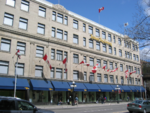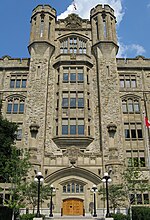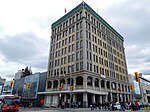Ottawa School of Art

The Ottawa School of Art is a non-profit art school in downtown Ottawa, Ontario, Canada. The school offers a one-year certificate program, a three-year diploma program, art camps, and general interest courses, as well as providing exhibition space and a boutique for the display and sale of artwork by local artists and students. The school facilities include a ceramics studio, sculpture studio, wood shop, printmaking studio, a dark room for photography, painting studios, and multipurpose studio spaces where life drawing classes take place.The three gallery spaces at the Ottawa School of Art's two locations display solo and group exhibitions by local, national, and international artists. The Ottawa School of Art Main Gallery and the Lee Matasi Gallery, which feature both professional and student artwork, are located at the school's headquarters at 35 George Street in Ottawa. The OSA Orleans Campus Gallery is located at the Shenkman Arts Centre at 245 Centrum Boulevard in Ottawa.
Excerpt from the Wikipedia article Ottawa School of Art (License: CC BY-SA 3.0, Authors, Images).Ottawa School of Art
Clarendon Court, (Old) Ottawa Rideau-Vanier
Geographical coordinates (GPS) Address Nearby Places Show on map
Geographical coordinates (GPS)
| Latitude | Longitude |
|---|---|
| N 45.426944444444 ° | E -75.693333333333 ° |
Address
Clarendon Court
Clarendon Court
(Old) Ottawa, Rideau-Vanier
Ontario, Canada
Open on Google Maps








